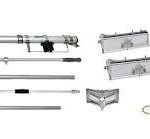How to Trade Commodities and Indices Using CFDs
Trading commodities and indices using Contracts for Difference (CFDs) has become a popular strategy among traders looking to diversify their portfolios and capitalize on short-term price movements. cfd trading allow you to speculate on the price direction of assets without actually owning them, making it a flexible and accessible option for both beginners and experienced traders. Here’s how you can get started with trading commodities and indices using CFDs.
Understanding CFDs
A CFD is a financial derivative that mirrors the price of an asset, such as a commodity or index. Essentially, you are entering a contract with a broker to exchange the difference between the opening and closing prices of the asset. You can profit from both rising (going long) and falling (going short) markets, depending on your prediction of the price movement. However, it’s worth noting that while CFDs offer potentially high returns, they also come with risks due to market volatility and leverage.
Trading Commodities Using CFDs
Commodities like crude oil, gold, natural gas, and agricultural products are some of the most actively traded assets. CFD trading allows you to speculate on price changes without needing to actually purchase or store physical assets, which can be cumbersome and expensive.
To trade commodities:
1. Understand Market Drivers: Monitor factors such as supply-demand dynamics, geopolitical events, and macroeconomic indicators that can impact commodity prices.
2. Choose the Right Contract: CFDs for commodities often come with varying expiry dates. Opt for contracts that align with your trading strategy.
3. Leverage Technical Analysis: Use charts and technical indicators to identify trends, resistance levels, and potential entry/exit points for your trades.
Trading Indices Using CFDs
Indices represent the performance of a group of stocks, offering a broader insight into a particular sector or economy. Examples include the S&P 500, Nasdaq 100, and FTSE 100. Instead of trading individual stocks, trading indices allows you to speculate on the market as a whole.
To trade indices:
1. Keep Up with News: Index movements are affected by broader market sentiment, economic reports, and global events. Staying informed will give you an edge.
2. Utilize Stop Orders: Volatility in indices can lead to rapid price shifts. Use stop-loss and take-profit orders to manage risk effectively.
3. Follow Economic Trends: Watch for interest rate decisions, GDP reports, and employment figures that influence market sentiment and index prices.
Final Thoughts
Trading commodities and indices through CFDs offers flexibility but requires a solid understanding of market factors and disciplined risk management. Whether you’re focusing on the energy sector or global equity markets, research and preparation are key to success. Remember, the leverage that makes CFDs attractive can magnify both gains and losses, so trade with care and consider starting small if you’re new to this strategy.

